Hamamatsu Castle is the fortress where Tokugawa Ieyasu spent 17 years, from age 29 to 45.
Ieyasu led campaigns from here in battles like the Battle of Anegawa, the Battle of Mikatagahara, and the Battle of Nagashino.
Located at the southeastern end of the Mikatahara Plateau in Hamamatsu, it is a modern castle with a series of baileys extending from the tenshu (main keep) to the second and third baileys.
Hamamatsu Castle is also known as ‘Castle of Success‘ because not only did Tokugawa Ieyasu take over the castle, but also many of its lords went on to become Roju (senior councilors) in the Tokugawa shogunate.
| Another name | Castle of Success |
| Castle type | Hilltop Castle |
| Tenshu (Main keep) | Reinforced concrete restored tenshu |
| Tenshu Style | Watchtower type |
| Number of floors in tenshu | Three stories, four floors |
| Castle Structure | Series of baileys (although during Ieyasu’s time, it was a linked bailey) |
| First Builder of the Castle | Tokugawa Ieyasu |
| First Construction Period | Around 1570 |
| Samurai Troupe | Hamamatsu Tokugawa Samurai Troupe |
The main keep had already been lost by the early Edo period, and its true appearance is unknown, thus the present structure is an imitation.
Hamamatsu is rich in legends associated with Ieyasu as it was where he resided before establishing the Tokugawa shogunate.
The current Hamamatsu Castle is a modern fortress renovated by the Toyotomi-affiliated Daimyo (Load) Horio Yoshiharu. It is not the castle from Ieyasu’s time. Excavations have revealed remnants of moats, gradually uncovering the appearance of the castle during Ieyasu’s era.
The castle during Ieyasu’s time was a fortification made of earth, utilizing natural terrain such as wetlands and hills; there was no or tenshu yet.
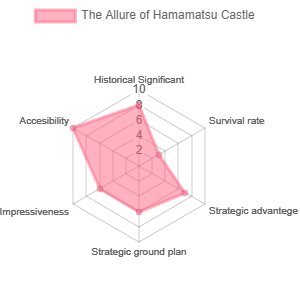
The Charm of Hamamatsu Castle Based on my Judgement and Bias
- Ieyasu’s Prime Base: Hamamatsu served as the stronghold where Ieyasu spent his mature years.
- Convenient Location: Situated within Hamamatsu city, it’s easily accessible.
In this article, we will introduce the highlights ,Gojoin and stamp of Hamamatsu Castle.
Highlights and Structure of Hamamatsu Castle
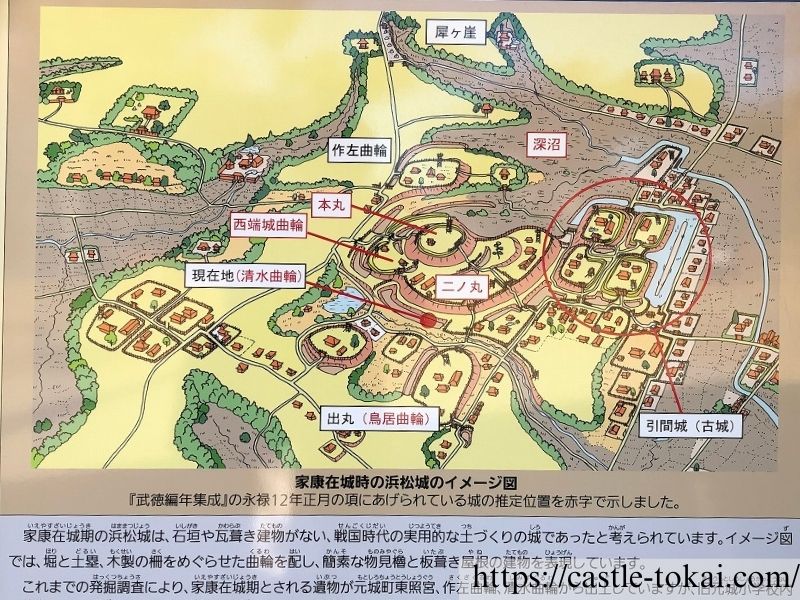
Hamamatsu Castle is situated at the southeastern end of the Mikatahara Plateau. The area is fortified by deep valleys formed by erosion, such as Sakuzadani, Shikatani, and Ikegawadani to the north of the castle, with the Tenryu River flowing to the east, providing a strong defensive position.
The current Tenryu River flows quite a bit to the east of Hamamatsu Castle, but during Ieyasu’s time, the present-day Magome River was as significant as the little Tenryu. The once deep valleys have been partially filled in, becoming shorter and shallower.
 Load of this site
Load of this siteThe north and west sides of Hamamatsu Castle are still steep slopes, even though they have become shallower. Considering how steep they originally were, it is clear that the terrain provided significant defensive capabilities.
The territorial expanse of old Hamamatsu Castle rivaled renowned castles like Odawara Castle in Hojo era, Edo Castle, Himeji Castle, Osaka Castle under Toyotomi rule, Okazaki Castle, and Yoshida Castle.
Despite its vast size, Hamamatsu Castle was characterized by having few and relatively modest buildings.
Currently, only the honmaru (main bailey) and some baileys have been developed into Hamamatsu Castle Park, serving as a place of recreational space for local residents.
Stone Walls of Hamamatsu Castle
Stone wall of Hamamatsu Castle
The stone walls of Hamamatsu Castle are of rubble that became popular in the early Sengoku period.
It was thought that the castle became a stone-walled fortress during the Horio era, but excavation has revealed stone walls from dating back to Ieyasu’s tenure as lord of the castle.
Not all walls during Ieyasu’s time were stone; some parts had traditional earthen fortifications alongside stone walls.
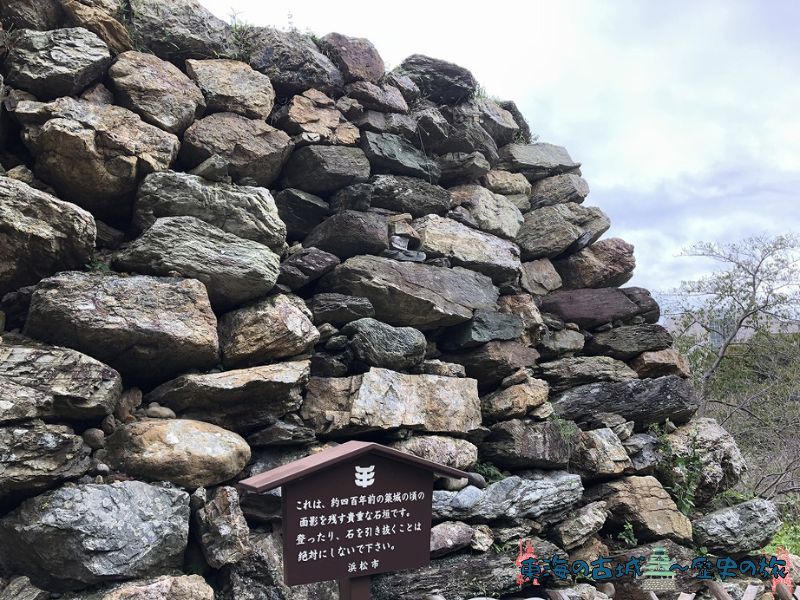

The stones used are the same as those in Futamata Castle and Yoshida Castle in Mikawa, due to the spread of the same silica rock stratum from Lake Hamana northwestward.
Futamata Castle and Hamamatsu Castle used stones cut from the same quarry, transported by boat.
Look for the Heart-Shaped Stone
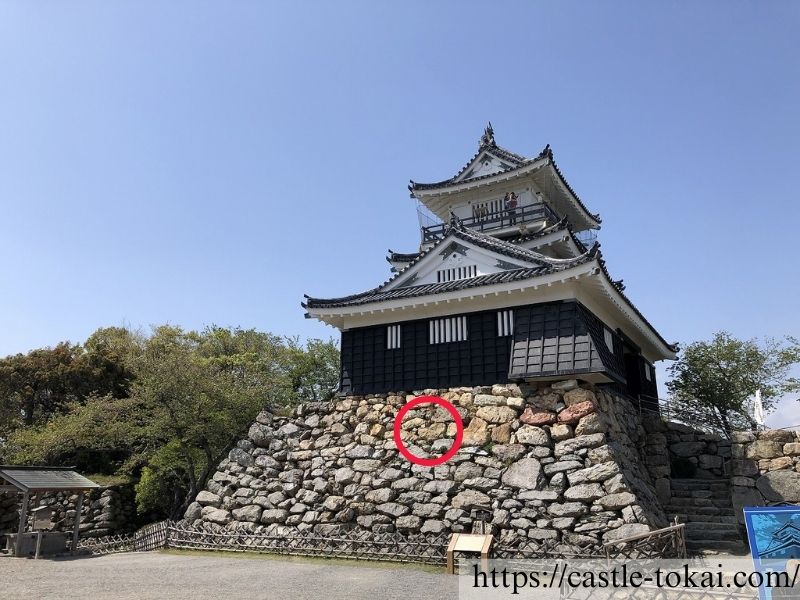

Located on the tenshu stone wall.
Due to using natural stones minimally processed for rubble, even irregularly shaped stones like hearts find their place within these walls.
Honnmaru (Main bailey)
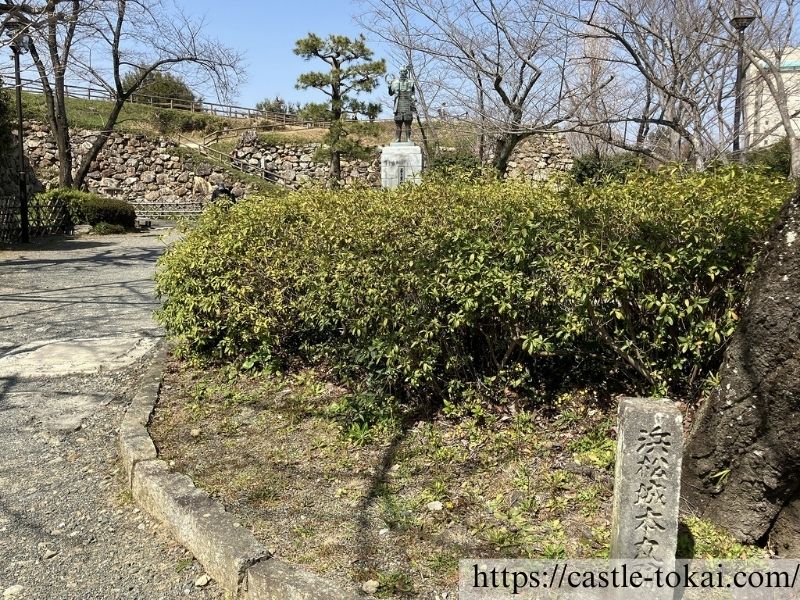

There is a statue of Ieyasu in Honmaru.
The area of the main bailey was once extensive, known as “Senjojiki” (thousand-tatami mat area).
However, the current honmaru has had its eastern half reduced in height, lost its stone walls, and in some areas has been paved with asphalt.
The moat that separated it from the Ninomaru (second bailey) has also been filled in.
During the Edo period, the homaru served as lodging for the shogun, so the feudal lords lived in the ninomaru (now: Hamamatsu City Hall), not in the Honmaru.
However, after Iemitsu’s (third generation of Tokugawa shoguns) journey to Kyoto, the shogun ceased to travel along the Tokaido Road, diminishing the importance of the honmaru, which was eventually demolished and became an empty space.
This is why many early modern castles have palaces in the ninomaru but not in the honmaru.



Maybe the high location of honmaruwas inconvenient for everyday life?
Fujimi Yagura (Tower)


As the name suggests, Mount Fuji can be seen from the Fujimi Yagura on clear days.
It was a single-story gabled storehouse, though tower are typically more than two stories tall. However, since Mount Fuji was visible even from a single story, it came to be called the Fujimi Yagura.
Tenshu Kuruwa (Tenshu bailey)
Hamamatsu Castle has Tsumemaru, the tenshu kuruwa, on a higher level than the honmaru.
The early modern castles built by Nobunaga and Hideyoshi also had tsumemaru, which was located on a higher level than the honmaru, where the family lived in an inner palace and tenshu.
Tenshumon (Tenshu Gate)
The restoration of the tenshumon was a project commemorating the 100th anniversary of Hamamatsu’s municipal government. The tenshumon is a turret gate.


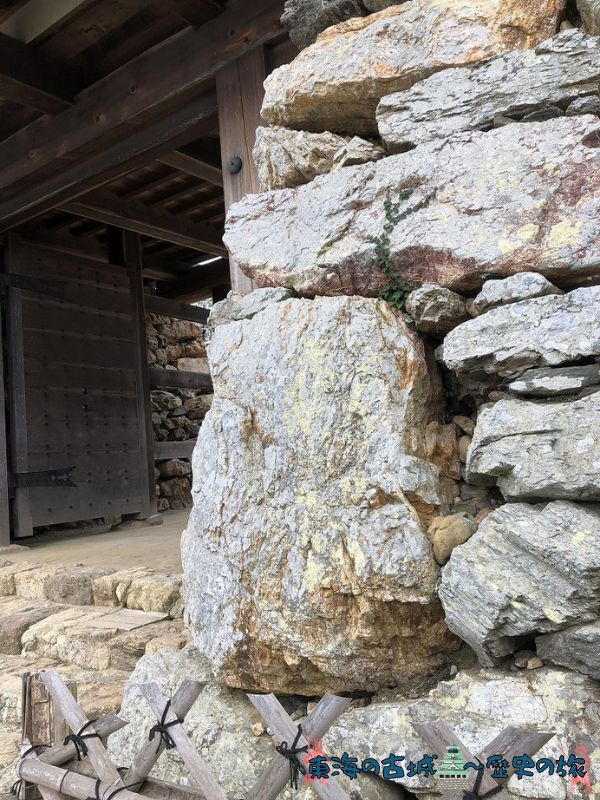

Kagami-ishi (Mirror stone) of Hamamatsu Castle’s Tenshu gate
Mirror stones are large stones intentionally placed on both sides of a gate, among other locations, to demonstrate the lord’s power.
Tenshu (Japanese Style Keep)
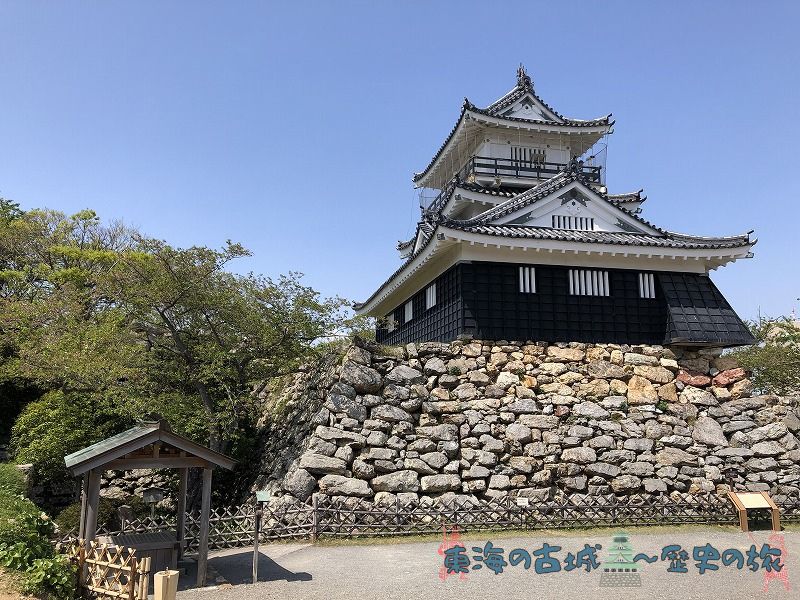

The tenshu of Hamamatsu Castle is a restored tenshu.
Since the original tenshu was lost very early in the Edo period, its exact appearance is unknown. The current tenshu is thought to be two-thirds of its original size. When it was a five-story tenshu, perhaps distant views were even clearer.



Can you see that there’s an extra space on the left side of the tenshu platform?
During Tokugawa Ieyasu’s time, the tenshu did not yet exist. The tenshu was bilt during the era of Horio Yoshiharu.
The tenshu is used as a museum, introducing the history of Hamamatsu and Hamamatsu Castle.



Being a small museum, even taking your time won’t require more than an hour. You can see everything in about 20 minutes.
The top floor of the tenshu serves as an observation deck, offering a panoramic view of Hamamatsu city.




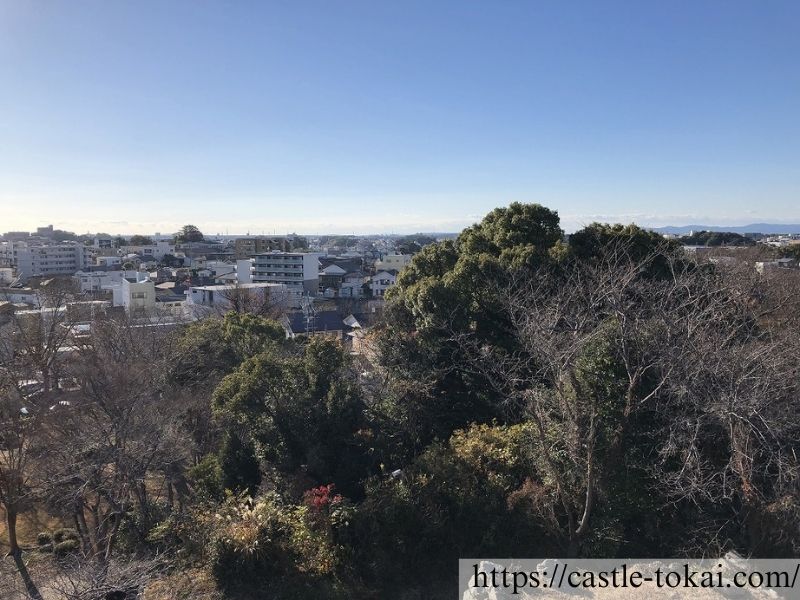

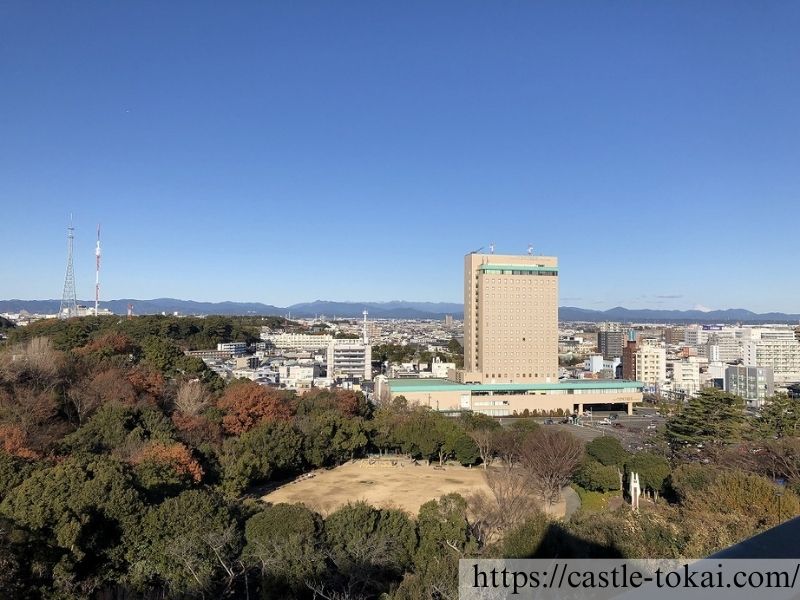

East-
The large ground is the site of the ninomaru. Just beyond it lies the site of Hikuma Castle. Mt. Fuji can be seen on the far left.
- South
-
The municipal library located below the crane to the left is on the site of a Demaru ruins. The Pacific Ocean is visible in the far distance.
- West
-
The wooded area is the site of the Sakuzakuruwa. It’s rare for kuruwas to be have personal names. In the far distance lies Lake Hamana.
- North
-
Futamata Castle and Tobayama Castle, as well as the Mikatahara area, should be visible, but it’s hard to distinguish.
Garden
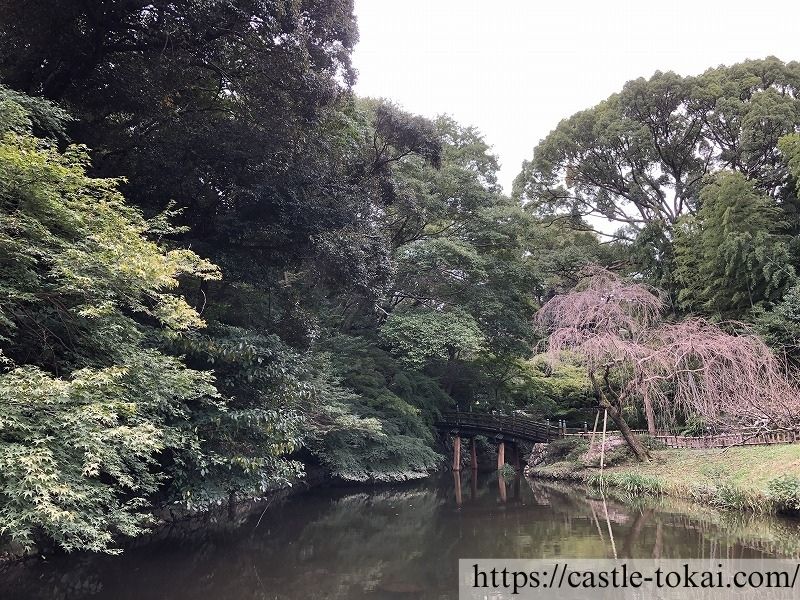

The scale of Hamamatsu Castle’s garden is not particularly large.
Many Japanese maple trees are planted, making it a place to enjoy the autumn leaves when fall comes.
There are areas designed to represent the flow of the Tenryu River and waterfalls, but water does not always flow.
The garden was built in a valley, and the path to the garden is set diagonally on a steep cliff, suggesting it could also serve the function of a moat in an emergency.
Official Web Site of Hamamatsu Castle
Hamamatsu Tokugawa Samurai Troupe
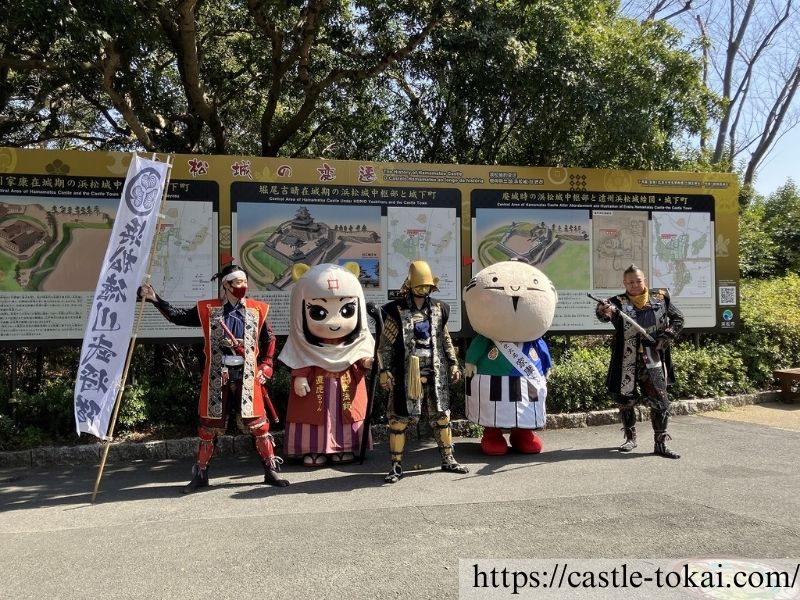

Only on weekends, from 1:00 PM to 1:40 PM, for 40 minutes, the successful daimyo Ieyasu-kun and the successful priestess Naotora-chan appear with the samurai troupe in the central grass square of Hamamatsu Castle.
You can photo with them.
So, let’s all say



Aim for greater success!”
together for the photo. It would be nice if you could achieve great success.
Unlike the samurai troops of Okazaki Castle or Nagoya Castle, they generally do not perform martial arts. Both Tokugawa Ieyasu and Sakai Tadatsugu have short hair.
When the “What Should Ieyasu Do” Taiga Drama Museum was operating, they performed martial arts.



Many were disappointed to find that it was only a photo session after expecting a martial arts performance.
It would be nice if they performed martial arts every weekend. They have cool moves and play the Japanese drum, so it’s a waste not to perform!
Official Web Site of Hamamatsu Tokugawa Busyoutai
Hamamatsu Castle’s Gojohin, Castle Gojohin Book, and Stamp
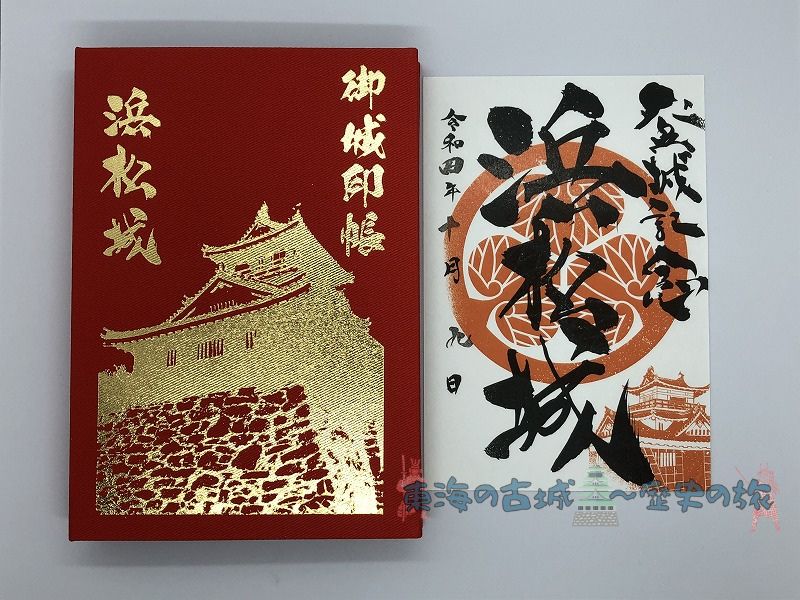

The Gojohin are sold at the souvenir shop in the tenshu.
Although various limited edition gojohin are sold, I purchased the normal gojohin.
Many gojohin require you to fill in the date yourself, but at Hamamatsu Castle, they provide the date for you.



Hoping for success, I also bought a Hamamatsu Castle gojohin book.
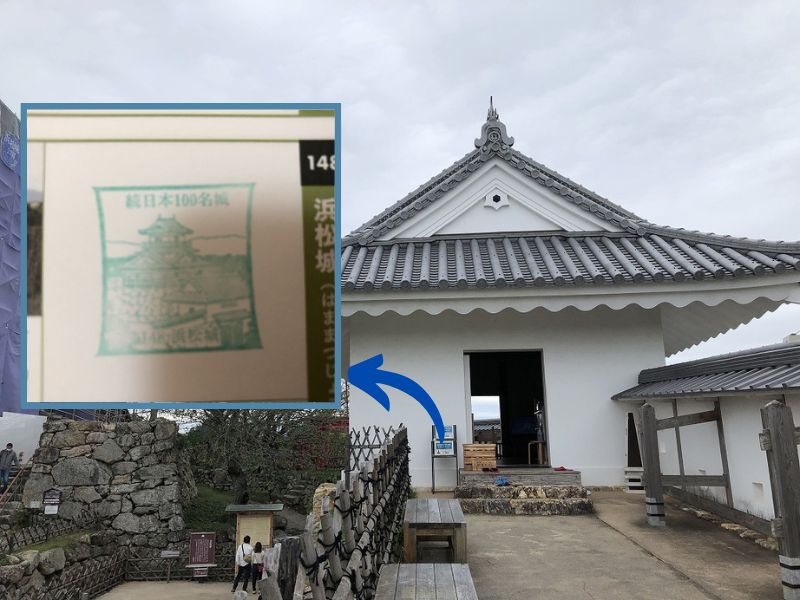

The stamp of Hamamatsu Castle is next to the tenshu gate
The stamp stand for Hamamatsu Castle is located at the entrance on the second floor of the tenshu gate.
Since Hamamatsu Castle is No. 148, purchase the “Continued Japan’s Great 100 Castles” version.
Stamp books for the 100 great castles in Japan are available at the souvenir shop in the tenshu.
Access to Hamamatsu Castle
Hamamatsu Castle stands in a conveniently located urban area, having been used as a government office during the Edo period.
Public transportation
It’s a bit of a walk from Hamamatsu Station, but not an unmanageable distance. Exploring sites like the main gate ruins on your way to the castle is also a good option.
It is about 20-minute walk.
You can also aim for the castle while exploring the ruins of the Ote-mon Gate and other places.
If walking is too much of a hassle, you can use the Entetsu Bus Route ① or ③. The circular bus “Kururu” is also an option, offering frequent service.
Drive to the Castle
The Hamamatsu Castle Park parking lot can be used for free for up to 90 minutes, and showing your parking ticket when buying an entrance ticket to the tenshu allows for an additional 60 minutes of free use.



During the cherry blossom season, the parking lot fills up quickly.
Even if the Hamamatsu Castle Park parking lot is full, there are many paid parking options nearby, though they may be more expensive than the park’s lot.

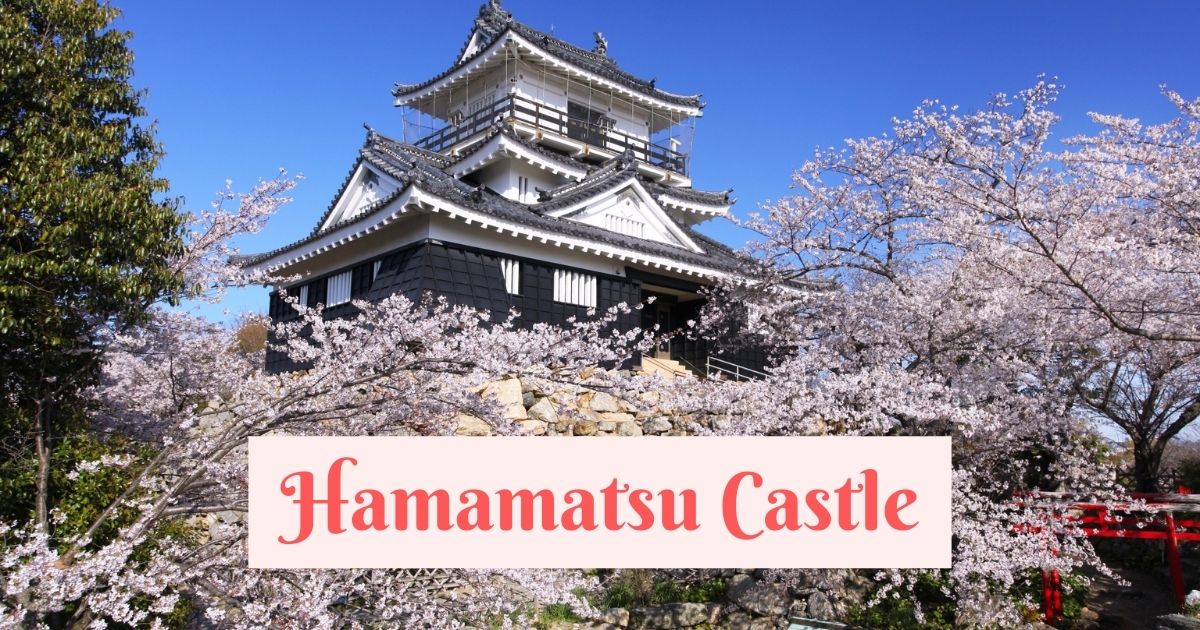

Comments